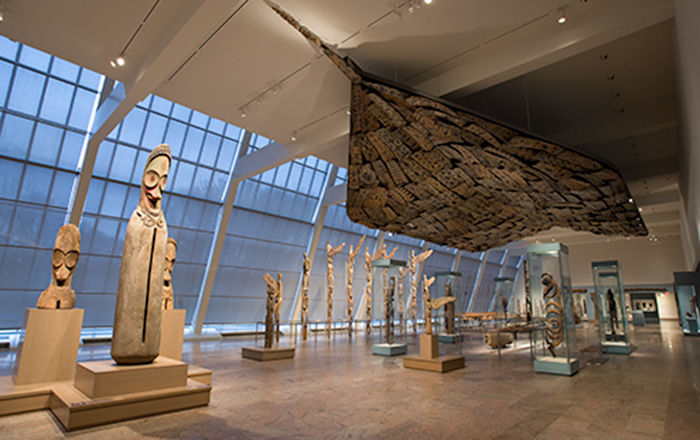Returned to lender The Met accepts temporary loans of art both for short-term exhibitions and for long-term display in its galleries.
Short-necked Lute (Sarinda or Saroz)
Not on view
In 1918, this lute from the Bengal region of northeastern India, mistakenly labeled a "Musical Instrument from Sudan," was sent by Paul Guillaume to the Modern Gallery and acquired by John Quinn for $200. Such misidentifications were common at the time due to the little knowledge accessible to dealers and collectors, as well as to the lack of a defined corpus upon which to establish comparisons.
Following Quinn’s death, this work disappeared and was only recently located for this exhibition. In 1926, it was exhibited at the Arts Club of Chicago by Quinn’s estate and purchased by the club as a gift to the Field Museum. Since that time, it has been kept in storage, still bearing its misinformed geographic attribution.
Photographed in 1918 by Charles Sheeler for his portfolio African Negro Wood Sculpture, clever lighting and a striking composition were largely responsible for transforming this work into a modernist icon. Particularly appealing is the mysterious birdlike shadow projected behind it. Seeing the lute in the round reveals the source of this shadow: the top of the neck is carved in the shape of a stylized peacock, impersonating Sarasvatî, the Indian goddess of music.
This image cannot be enlarged, viewed at full screen, or downloaded.

